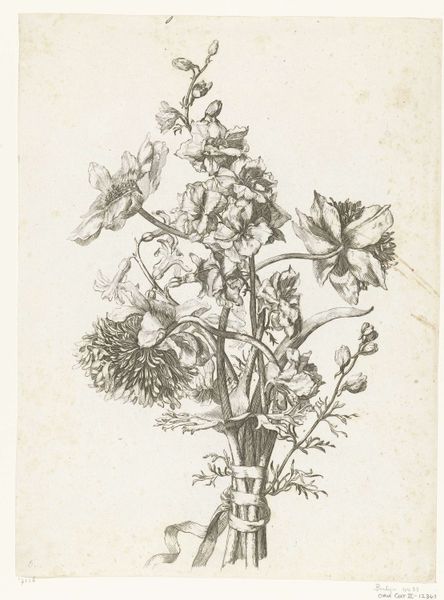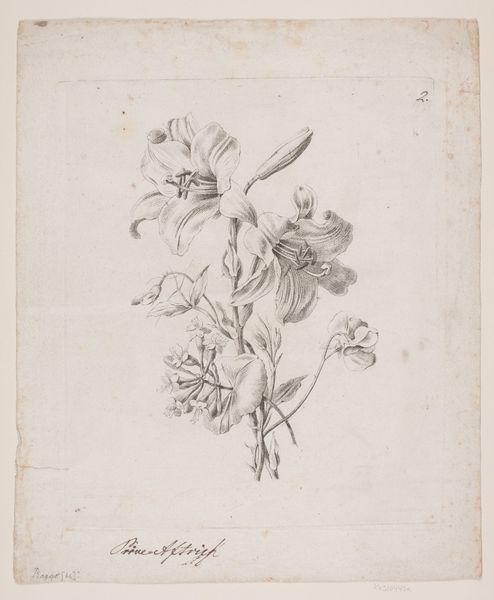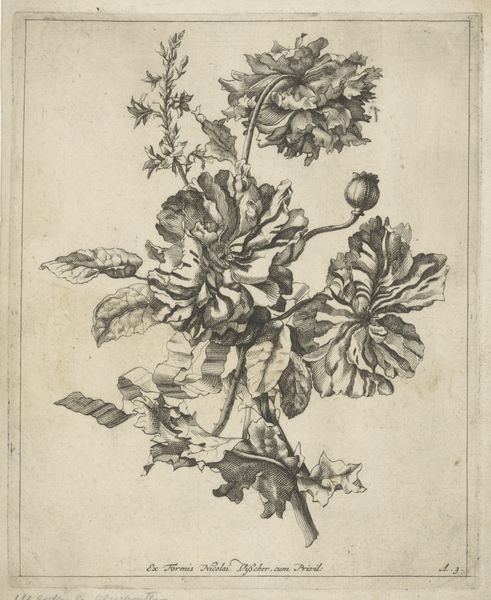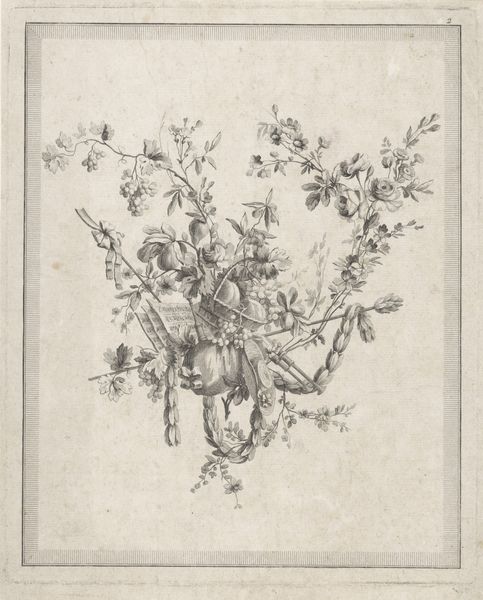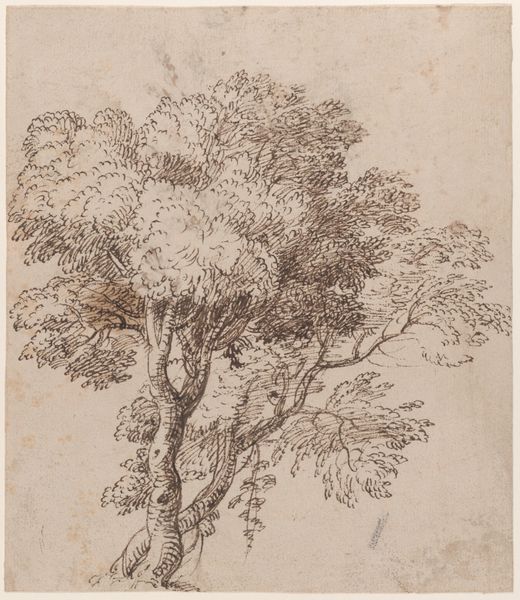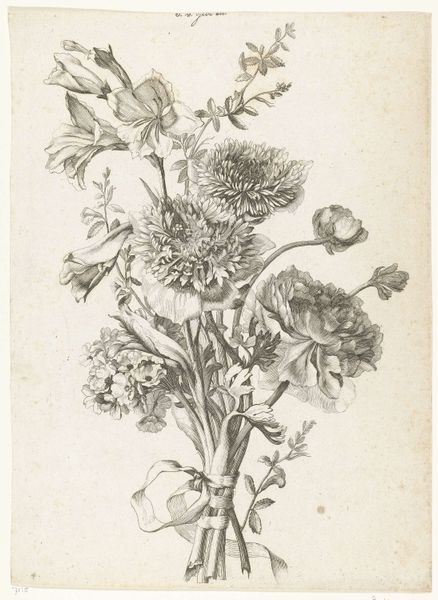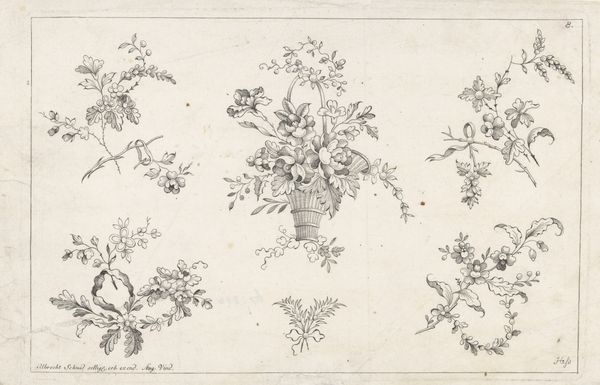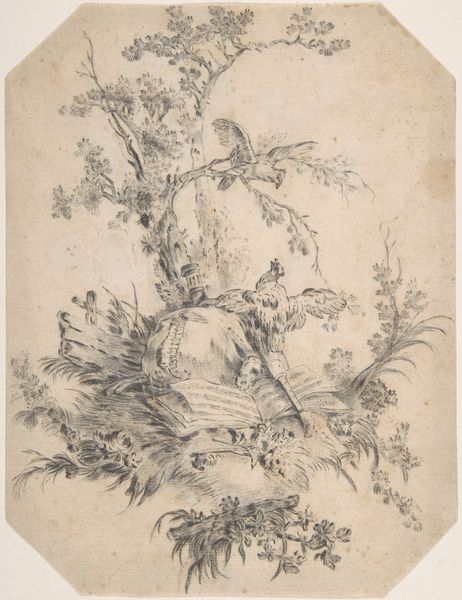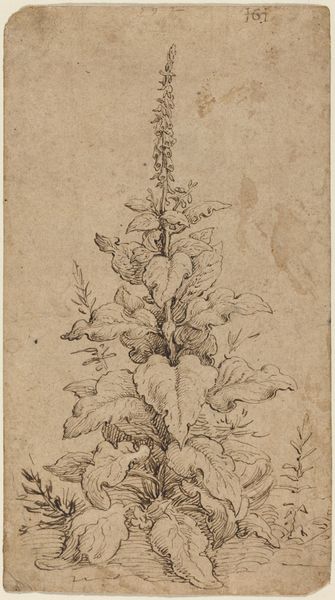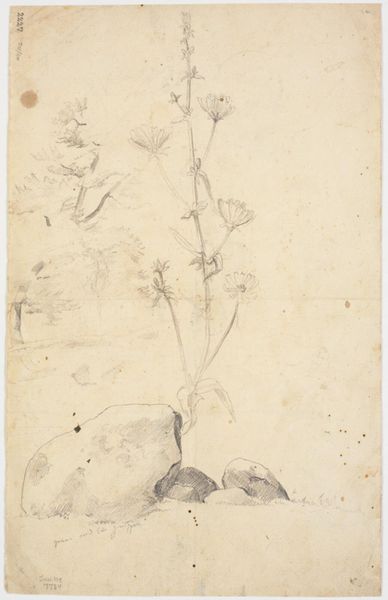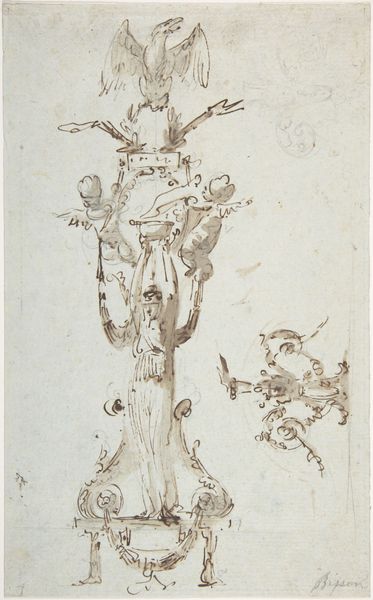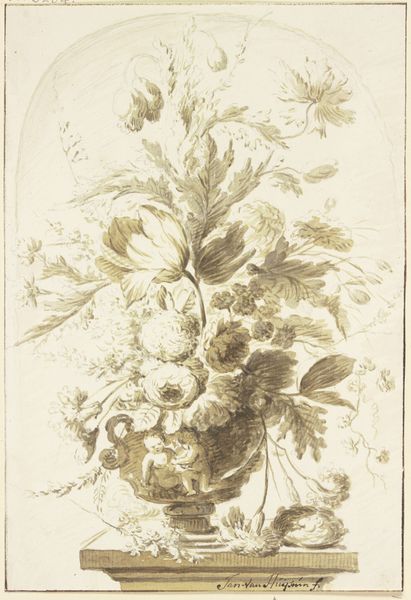
Ontwerp voor een fantasieglas met een satyrfamilie en een geit c. 1650 - 1675
0:00
0:00
Dimensions: height 269 mm, width 201 mm
Copyright: Rijks Museum: Open Domain
Editor: This pencil drawing, "Ontwerp voor een fantasieglas met een satyrfamilie en een geit," or "Design for a Fantasy Glass with a Satyr Family and a Goat," was created circa 1650-1675 by the Master of the blue wash. I am immediately struck by the rather strange gathering that sits atop this delicate looking glass. What historical context would have influenced this type of imagery? Curator: Well, what you're seeing is a distinct Mannerist aesthetic, a style that thrived in the late Renaissance. The drawing illustrates a glass, yes, but functions primarily as a display of learned references and artistic license, which appealed to a particular educated viewership. What political or social commentary might it be subtly engaging in? Editor: It seems incredibly whimsical and otherworldly... was art like this created just for the elite? Curator: To a large extent, yes. The display of classical allusions – satyrs, goats, references to bacchanalian revelry – would primarily resonate with those familiar with classical literature and mythology, typically the wealthy and educated. This glass wouldn’t be for drinking; it’s a symbol, a demonstration of knowledge and status. Consider how displaying it becomes a form of cultural capital. Editor: So it’s less about pure aesthetics and more about signalling a certain kind of societal position through art? Curator: Exactly. The artwork serves as a marker of cultural and intellectual attainment. The seemingly lighthearted imagery reinforces exclusive notions tied to class. Does knowing this change how you interpret the composition? Editor: It certainly does. What I initially perceived as simple whimsy, now appears deliberate – and perhaps even pointed – in its message. Thanks for sharing your expertise! Curator: My pleasure! Considering the public role of such drawings prompts critical examination of art's relationship to power structures, which helps us better understand the society of its time.
Comments
No comments
Be the first to comment and join the conversation on the ultimate creative platform.
